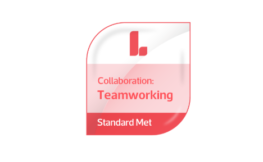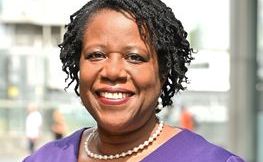“A team is a small number of people with complementary skills who are committed to a common purpose, set of performance goals, and approach for which they hold themselves mutually accountable.” Katzenbach, J. R. & Smith, D. K. (1993)
Effective Teamwork
Effective teamwork is critical for completing tasks, improving motivation, sharing knowledge and resources as well as generating ideas: Even the most creative individuals won’t have more ideas than your team as a whole.
Developing and leading a team is a complex undertaking. Team members often have to share resources and manage competing demands on their time.
John Adair’s Action-Centred Leadership Model
Action-Centred Leadership is a simple leadership and management model, which makes it easy to remember and apply and to adapt for your own situation.
Good managers and leaders should have full command of the three main areas of the model and should be able to use each of the elements according to the situation.
Being able to do all these things, and keep the right balance, gets results, builds morale, improves quality, develops teams and productivity, and is the mark of a successful manager and leader
.
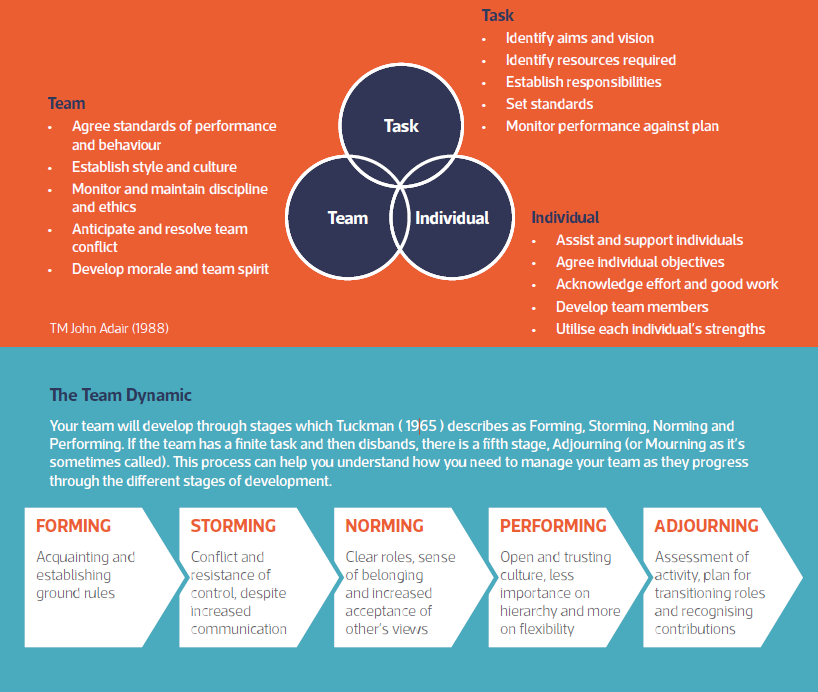
Team roles
Belbin (2010) has defined nine team roles to explain how individuals behave in the workplace. This can be a useful tool in evaluating whether you have the right range of qualities and interpersonal skills for members to operate effectively as a team.
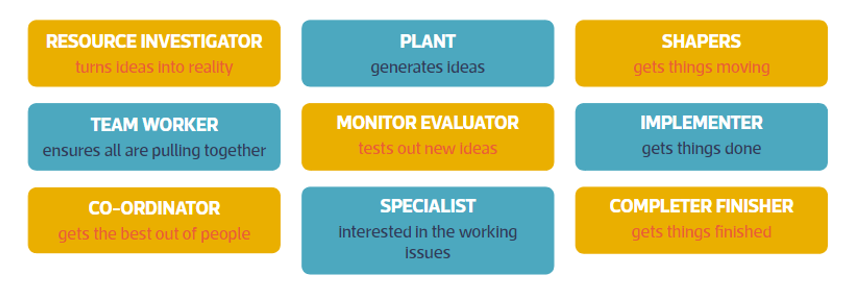
Once your team is assembled and goals defined, you can support them in being as effective as possible in achieving these goals by:
- Creating an environment of openness, trust, respect, loyalty and co-operation providing a ‘blame free’ culture and sharing credit for the team’s successes.
- Gaining commitment and motivating team members.
- Ensuring that all members feel their contribution is valued and that there is regular, clear and accurate feedback to the team on its performance.
- Welcoming ideas, input and suggestions for alternative courses of action.
- Being willing to take difficult decisions and explain the basis on which they have been taken.
- Being aware of participants’ loyalties to people or organisations outside the team and being a fair and impartial mediator of interpersonal issues.
- Keeping focused on goals and the importance of co-operation in achieving them.
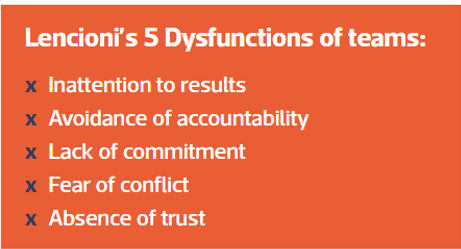
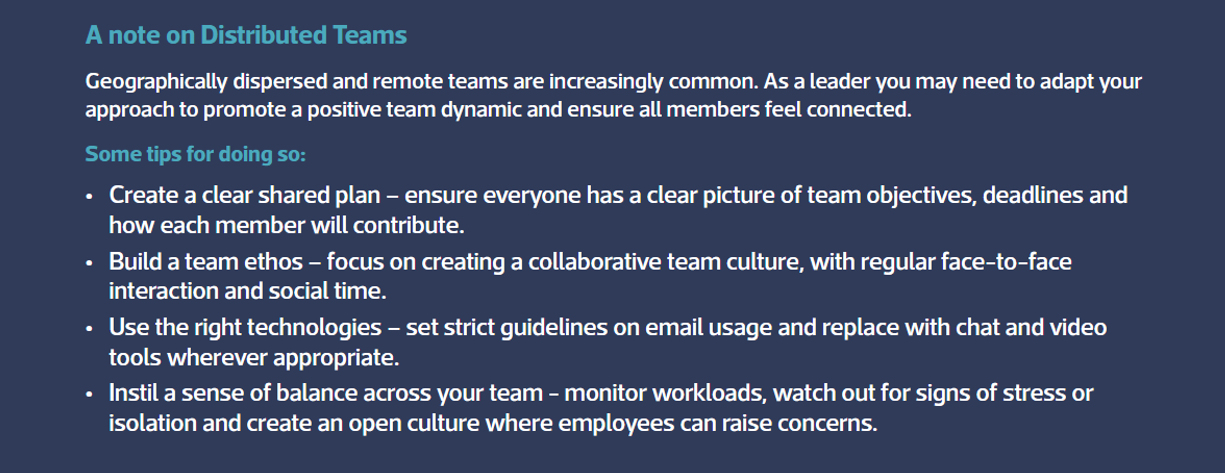
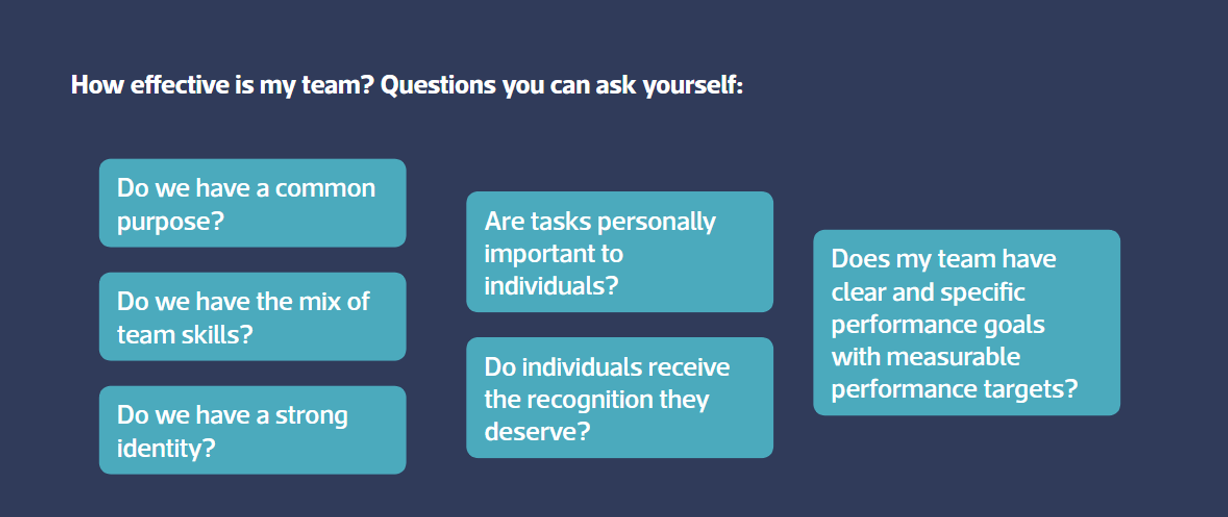
References
Adair, J. (1988), The Action Centred Leader Spiro Press
Beeman, R (2014 April). Building a Winning Financial Services Team www.wealthmanagement.com/careers/building-winning-financial-services-team
Gratton, L & Erickson, T J (2007 Nov). Eight ways to build a collaborative team Harvard Business Review
Katzenbach, J. R. & Smith, D. K. (1993). The Discipline of Teams Harvard Business School Press
Knight, R (2015 Feb). How to Manage Remote Reports www.hbr.org/2015/02/how-to-manage-remote-direct-reports
Lencioni, P (2002). The five dysfunctions of a team: A leadership fable Josey-Bass: San Francisco
Owen, J (2009). How to Lead 2nd Ed. Pearson Education Ltd: Harlow
Tuckman, Bruce W. (1965). Developmental Sequence in Small Groups Psychological Bulletin 63 ( 6 ) 384-399
How would you rate your teamworking skills? Test yourself with our Scorecard.
If you’re a member, you can test yourself on Teamworking and see if you meet the standard.
Spotlights
Further Resources
From the Blog





